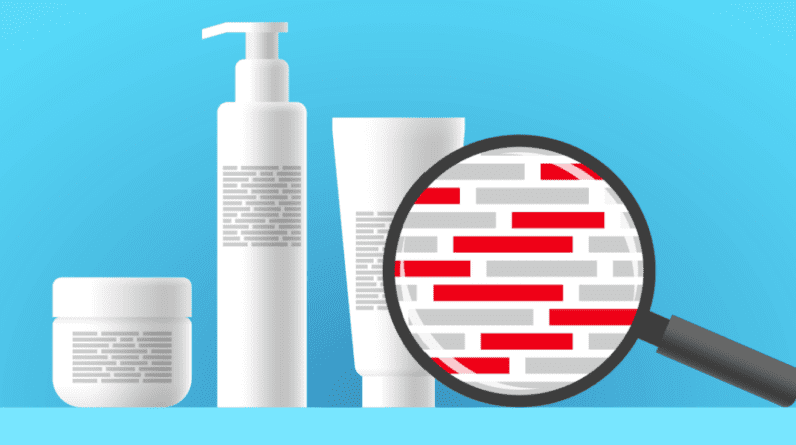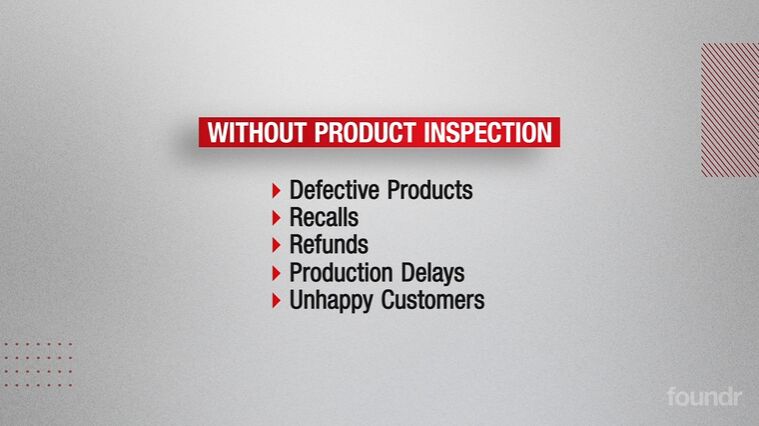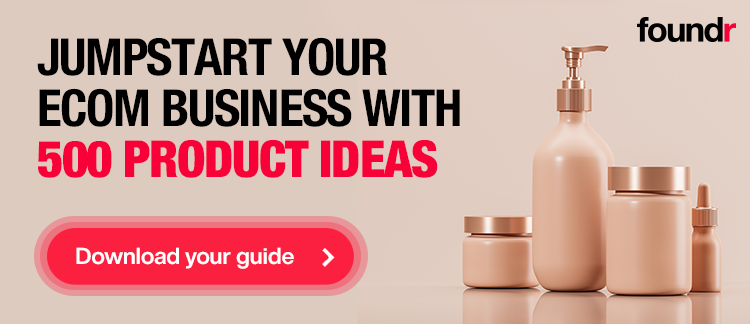
From my experience helping thousands of ecommerce brands over foundr’s history, one of the most commonly overlooked areas is product testing.
Many founders are happy to invest in creating concepts and marketing products, but very few spend even a fraction of that budget actually testing their product first.
“It’s not a complicated product” or “I didn’t think there would be any issues” are two common excuses I hear all the time.
But attention to detail will separate your brand from the competition, ensure customer satisfaction is not only met but exceeded, and help you build a brand that has all the groundwork laid for long-term success.
So, with that in mind, let’s dive into what product testing is, and why it’s worth investing.
What Is Product Testing?
Product testing is the term used for the process whereby you analyze a product concept in more detail, testing out features or functionality to understand how customers may use or interact with it.
You’d be amazed at how often products have been created in the past for a desired purpose, only to quickly realize that consumers don’t see it the same way.
Now, that’s not an issue when you have a couple of prototypes in your garage from the testing phase, but 5,000 of them sitting there useless is a big problem.
Don’t Skip: What Is MOQ (Minimum Order Quantity)?
Why Product Testing Is So Important
Aside from preventing sleepless nights spent dreading tracking notifications for a large shipment on its way of a product you now know is defunct, product testing also has several other benefits.
It helps you gain insights early on.
Product testing is essential for any entrepreneur to gain valuable insights into what a customer needs and wants (not to mention what they absolutely don’t want!), which allows you to tweak products and services accordingly. Remember, you might think you have the most innovative, game-changing product ever. But if there’s no target market for that product, then there’s no business there.
Some entrepreneurs skip this aspect for fear of negative feedback, but I like to tell them to try reframing their thinking. If it isn’t an in-demand, viable product now, what’s going to change before you’ve spent thousands getting it into production? You’re better off cutting your losses and either tweaking what you already have or using what you’ve saved to try something else.
It improves products.

This aspect should go without saying, but product testing improves products, time and time again. As an entrepreneur, you might think that your products can’t be improved and that they are 100% perfect as they are, but chances are you are too close to the concept to see the bigger picture.
By testing your product and getting feedback from your target audience, you may notice something you didn’t even consider.
At the very least, you’ll gain affirmation that your product is 100% perfect and that you are a genius, so what’s the harm in checking?
You’ll save a ton of time and money.

At first glance, you might think that product testing will actually cost you more time and money, given that you are paying for one-off deliveries and spending time adding new steps to your production process.
But in the long run, this approach will save you a ton of time and effort.
Five-time ecom founder Gretta van Riel herself fell into this very trap in the early days of SkinnyMe Tea, which she dives into as part of the Start & Scale course.
“With SkinnyMe Tea, we once had a terrible experience where we placed a large order with our manufacturer in China,” admitted Gretta. “I was thinking I was pretty smart by ordering a massive quantity of tea at once since the expiration dates are good for a while on tea, and we could lower our shipping costs by getting it done in one big order. So, I ordered $1M of tea from a Chinese manufacturer. By the time we opened the shipment in Australia, it wasn’t even the type of tea we wanted and was totally and utterly unusable. Needless to say, we had to throw out the entire batch right away. It was even an additional $14,000 just to throw the tea out!”

The Different Types of Product Testing
While the concept of product testing might seem quite simple, there are actually several different ways that you can go about it:
A/B testing: This form of product testing occurs by developing two versions or a product with one differing feature and asking your target audience which one they prefer. With A/B testing, it’s important to keep the differences to a minimum so that you can clearly establish what your audience does and doesn’t like.
Concept testing: The process of exploring the feasibility of a potential product idea of concept and how it could perform in the marketplace. This concept tends to involve reaching out to your target audience before any production takes place. This is a great option for any established brand with a loyal customer base to call upon for feedback.
Market testing: Market testing is one step further from concept testing, where you actually send your new product to some customers to get their direct feedback and thoughts. This is a great way to identify scenarios you didn’t consider, such as shipping issues, before investing heavily in a large stock of the product.
QA testing: Quality assurance or QA testing occurs when you test the functionality and features of your product before releasing it publicly. This is the stage where you would run your product through different potential consumer scenarios to test if there are any glaring issues that need to be amended, such as faulty zippers on tops, complicated opening mechanisms on boxes or bottles, and so on. Fortunately, most competent manufacturers have QA testing built into their production process.
User testing: The final stage of testing is user testing, whereby you release your product to the public and carefully observe how customers interact with it. This information may not be actionable for your first product batch, but it can be used for future deliveries.
Tips for a Successful Product Testing Process
When I’m advising aspiring founders on their product testing process, there are three key principles that I tell them to stick to.
Go into it with an open mind: When product testing a concept you are very confident in, it can be easy to make assumptions about how customers will react to it, which can cloud your judgment. Try to go into testing with no assumptions, as this will allow you to evaluate the feedback objectively and make the best decisions.
Use a variety of testing methods: This ensures you are product testing throughout every phase of development, continuing to tweak your product until it is perfect for your market.
Continue testing: Even after a product has launched with some success, it is important that testing is at the forefront of your mind. After all, successful products have the potential to be even more successful, and adaptability is crucial for ever-changing markets.
Keep Learning: How to Price a Product – The Definitive Answer
Test, Invest, and be the Best
Now that you have all the insight you need into the importance of product testing, it’s time to put it into practice and take your products to the next level.
To elevate the rest of your ecommerce brand alongside your products, download our FREE 500 product ideas guide.
Find your winning product idea, even if you feel like all the “good ideas” are already taken, and set your brand apart from even the most competitive marketplaces.








